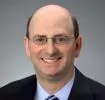For the second time in just over a month, a federal judge has denied a Federal Trade Commission (FTC) motion to enjoin the merger of two hospital systems, this time the 13-hospital Advocate Health Care and the 4-hospital NorthShore University Health System, both located north of Chicago. The order denying the preliminary injunction will be followed by a detailed opinion outlining the judge's grounds for the decision, which could be issued as early as this coming Friday. Yet the denial represents a significant development for the FTC, as the agency's winning streak in hospital merger challenges is threatened once again.
If the FTC decides to continue the fight, the Seventh Circuit
Court of Appeals would join the Third Circuit Court of
Appeals—currently considering the FTC's appeal of a
Pennsylvania federal judge's denial of its request to block the
merger of Hershey Medical Center and Pinnacle HealthCare—in
taking up what are likely similar questions related to market
definition and the relevance and impact of health care reform when
considering parties' efficiencies arguments. For providers
watching these proceedings with an eye on how they may affect the
antitrust risk profiles of their own merger or affiliation
strategies, this summer is shaping up to be a momentous one, with
an as-yet unresolved FTC merger challenge in West Virginia also
looming in the background.1
In December 2015, the FTC issued an administrative complaint,
alleging that the merger of Advocate and NorthShore would violate
both the Clayton Act and FTC Act by reducing competition for
general acute care services sold to commercial payors in a putative
relevant market of the suburbs north of Chicago. Within days, the
FTC and the Illinois Attorney General filed a complaint in federal
district court in the Northern District of Illinois and moved for a
preliminary injunction to block the merger pending the outcome of
the administrative proceeding. During a six-day, trial-like
hearing, the hospitals and the FTC put on several expert and fact
witnesses, with the FTC bearing the burden of demonstrating that it
was likely to succeed on the merits of its administrative challenge
and that such a challenge is in the public interest.
District Judge Jorge Alonso's Order of June 14 states that the
FTC did not carry this burden. Once the public version of the
court's more detailed opinion is released, we will have greater
insight into Judge Alonso's analysis of the evidence and the
arguments made by both sides in the case:
Relevant Market Definition: The FTC argued that the
northern Chicago suburbs (northern Cook County and southern Lake
County) comprised a relevant geographic market, with the relevant
service being general acute care services. The systems argued that
the FTC had "gerrymandered" the relevant geographic
market in a way that excluded several competitor hospitals, and
also improperly excluded outpatient services from the relevant
product market. The judge's detailed opinion should reveal
which method of market definition he favored, and whether or not he
rejected the FTC's argument that the market for general acute
care is highly local, as the district judge in the FTC v.
Hershey Medical Center case did.
Post-Merger Pricing: The FTC argued that as the largest
health system in northern Cook County and southern Lake County, the
merged system would have increased leverage in rate negotiations
with payors, who would need the combined system in order to compose
a viable network to offer to employers. The hospital systems
disputed that the transaction would result in the merged system
being able to raise rates anticompetitively as alleged by the FTC,
arguing that competition among hospitals in the broader Chicago
area would keep prices in check. As in the Hershey Medical
Center matter, the judge's perceptions as to where
patients in the northern Chicago suburbs are willing to seek
care—locally, or elsewhere in the greater Chicago
area—will likely influence his decision.
Procompetitive Aspects of the Merger: The hospital systems
identified several procompetitive efficiency claims that they
argued were likely to result only from the merger—including
their ability to offer a new, lower-cost, narrow-network insurance
product to consumers. The hospital systems claimed that the merger
would enable them to engage in the kind of innovation that health
care reform demands. The FTC, as it has done in all three pending
hospital challenges, categorically dismissed the efficiencies
claims as being speculative and not merger-specific. Whether Judge
Alonso found the efficiencies arguments compelling, or whether they
played any role at all in his decision, will be one of the most
interesting parts of the detailed opinion. Although efficiencies
did not play a major role in the actual analysis in the Hershey
Medical Center decision, the judge's consideration of the
"equitable" aspects of the efficiencies arguments in that
case gave rise to some pointed language directed at the FTC about
the agency's perception of the post-reform health care
landscape.
Footnote
1 Foley & Lardner LLP is counsel of record in FTC v. Cabell Huntington Hospital, FTC Docket No. 9366.
The content of this article is intended to provide a general guide to the subject matter. Specialist advice should be sought about your specific circumstances.



